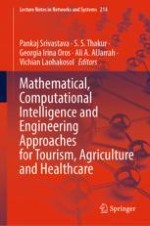This book is a collection of selected papers presented at the 17th FAI International Conference on Engineering, Mathematical and Computational Intelligence (ICEMCI 2019), held at Jabalpur Engineering College, India, from 21–23 December 2019. This book discusses mathematical, computational intelligence and engineering approaches for tourism, agriculture and health care. It is a unique combination of a wide spectrum of topics, such as tourism destination ranking, medical diagnosis-based intelligent systems, drivers for hotel objectives, irrigation systems and more, which are discussed by using fuzzy, statistical and neural network tools. This book will be valuable to faculty members, postgraduate students, research scholars as well as readers from the industrial sector.
